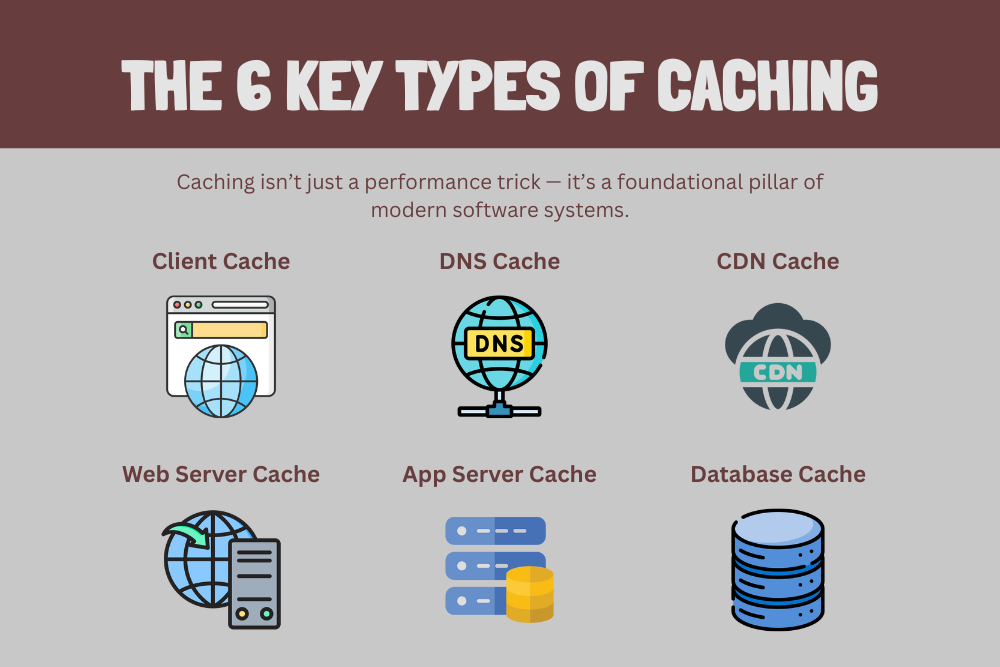Why Caching Matters in Software Architecture
Whether you’re building an enterprise SaaS platform, a content-heavy website, or a lightweight mobile app, speed is king. And speed often comes down to caching.
As a full-cycle developer with over a decade of experience, I’ve seen systems crumble under load and bounce back with a well-placed caching layer. But caching is not a one-size-fits-all tool, in fact, it’s a layered strategy.
Let’s decode the different types of caches that make the web blazing fast.
The 6 Key Types of Caching
1. Client Cache
- Use Case: Faster retrieval of static content (e.g., CSS, JS, images) stored in the browser.
- Example: A user visits your app, and your logo is loaded from local browser storage instead of fetching it again.
- Tools: Browser Cache, Service Workers
2. DNS Cache
- Use Case: Reduces domain lookup times by storing resolved IP addresses.
- Tools: Amazon Route 53, Azure DNS, Google Cloud DNS
3. CDN Cache
- Use Case: Distributes and caches static assets closer to the user’s location.
- Tools: Akamai, CloudFront, Azure CDN
4. Web Server Cache
- Use Case: Prevents unnecessary regeneration of HTML pages or views.
- Tools: ElastiCache, CloudFront
5. App Server Cache
- Use Case: Caches computed results, configurations, or frequently accessed data.
- Tools: Redis, Memcached, ElastiCache
6. Database Cache
- Use Case: Reduces expensive DB queries by storing query results.
- Tools: Redis, Memcached, Query Cache, ElastiCache
When to Use What?
Caching is contextual. For example:
- If you want to reduce latency for global users → go CDN.
- If your DB is the bottleneck → implement Redis-based query caching.
- If your app recalculates the same logic frequently → app-level caching works wonders.
When architecting systems for scalability, I always layer caching based on access frequency and load distribution.
My Caching Stack in Real Projects
In SaaS projects like PerkZilla and CoinDiscovery, I’ve used a combination of:
- Laravel’s built-in cache mechanisms,
- Redis for queue + response caching,
- Cloudflare + CloudFront for static assets.
Caching is where code meets infrastructure and when done right, it’s the difference between “meh” and mind-blowing user experience.
Final Thoughts
Caching isn’t magic. It is engineering.
But with the right tools and implementation strategy, it can become one of your strongest performance weapons.
If you’re building high-performance systems and need help with caching architecture, performance audits, or SaaS scaling — let’s connect.
